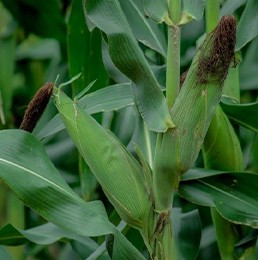
SERIES OF TOP 20 AGRIBUSINESS OPPORTUNITIES-Botswana Maize Production-10
Botswana for the longest time has been an importer of maize from South Africa, as our local farmers still fail to meet the local consumption. Maize is a popular source of carbohydrates in humans and feed to livestock. The Department of Meteorology Services declared that Southern African countries would experince El Nino conditions which are characterized by heat waves and low rainfalls in the year 2023/2024, so far many farmers haven't plowed to due unreliable rainfall across the country. The temperatures have been abnormal nationwide, from 36 degrees Celsius to 40 degrees Celsius, and these extreme temperatures have significant negative impacts on plants as they cause stress, stunt development, and cause mortality. In the long term, the quantity and quality are what spikes the food security. According to the government's latest livelihood assessment, released in July 2023, almost 37,000 people are estimated to need food assistance until at least March 2024.
For many years there has been a shortage of maize in Botswana which has been caused by unfavourable conditions that deter farmers from plowing in numbers. In good years we produce 20,000 tons of maize, but our local demand is 180 000 to 190 000 tons per annum, that's means we import almost 170 000 tonnes from South Africa, Malawi, and Zimbabwe as our agriculture still fails to stand on its feet the local production.
As per Volza Botswana (17th July 2023), maize buyers and importers directory, there are 459 active maize importers in Botswana importing from 936 suppliers predominantly from South Africa, Malawi, and Zimbabwe. The top 3 maize importers are Bokomo Botswana Propriety, Bolux Group Propriety Limited, and Masters Farmers Feed Property Limited, white maize is imported in greater quantity than yellow maize. Regardless of the amount of money injected into agriculture through ISPAAD does not translate to the total expectations, she still has hope and trust in local farmers, as Temo Letlotlo has been launched in the year 2022/2023 to support micro and macro farmers with farm inputs through the help of National Development Bank and Ministry of Agriculture.
The maize production is under threat as we have received low rainfall, other farmers failed to access the Temo-Letlotlo services and the Ministry of Agriculture wasn't fully ready to implement the program as it needs extension services, human capital-labor, and some loopholes have been identified in the process.
Furthermore, for our maize production to have great quantity and quality of maize we need to have more large-scale farmers in areas like Barolong farms, Ngwaketse, Chobe Enclave, and Pandamantega as the areas have shown potential over other areas. In 2016/2017, Botswana Agricultural MArketing Borad (BAMB) stated that 400 farms had registered contracts with them, and more than half were from Pandamantega. This shows that if we This shows that maize is an ideal crop to utilize in Pandamantenga areas.
In conclusion, we are likely not to have a maize harvest of not more than 20,000 tonnes, thus the import bill increases hence prices of maize meal and other maize by-products increase.